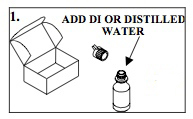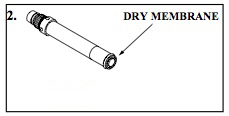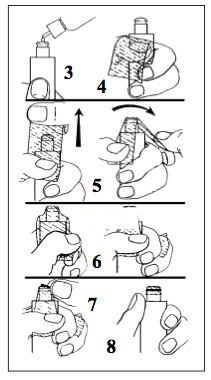DO Meter Stretch-Over Membranes
OK, we get it, some of you out there love the whole stretch-over style dissolved oxygen membranes. That whole "art and science" thing that goes into getting it just right. I always took pride in my prowess changing the stretch-over membranes while my colleagues watched in amazement. There may have even been a twinge of envy from them as I strutted through the building with my freshly installed DO membrane. Yeah, I'm with you on the coolness of it all.
However, you will have some competition because everyone will know the secrets after this step-by-step guide to changing the stretch-over style dissolved oxygen membranes. Let's get started.
NOTE: All brand new probes are shipped dry, you must follow these instructions! Some rental agencies also ship the probes dry when you rent the sensors so this procedure applies in those situations as well.
1) Open the membrane kit and prepare the electrolyte solution. Dissolve the KCl in the dropper bottle by filling it to the neck with deionized or distilled water and shaking until the solids are fully dissolved. After the KCL is dissolved, wait a few minutes until the solution is free of bubbles.

2) Remove the o-ring and the dry membrane from the sensor tip (after unscrewing the sensor guard). Thoroughly rinse the sensor with electrolyte fluid.

3) Grasp the probe in your left hand (or right for left-handers). When preparing the YSI 5739 probe, the pressure compensating vent should be to the right. (A left-handed operator may choose to reverse hands and vent direction.) Successively fill the sensor body with electrolyte, then pump the diaphragm with the eraser end of a pencil or with some similar soft, blunt tool. Continue filling and pumping until no more air bubbles appear. (With practice, you can hold the probe and pump the diaphragm with one hand while simultaneously pouring electrolyte into the sensor body with the other.) Sensors on the YSI 6-series sondes will not have the diaphragm to pump.
4) Secure a membrane between your left thumb and the probe body. Always handle the membrane with care, touching it only at the ends. 
5) With the thumb and forefinger of your right hand, grasp the free end of the membrane. With one continuous motion, gently stretch it up, over, and down the other side of the sensor. The membrane should conform to the face of the sensor. You should have some stretch to the membrane. Do NOT just place it lightly over the top of the sensor.
In order to see how much they can actually stretch so that you're aware, take one of the membranes from the case (or the dry membrane you just removed from the new sensor tip) and grasp each end with your hands and pull it. You'll be surprised at how far they stretch without tearing. People are always afraid to tear them but you should apply some stretching to the...wait for it...."stretch-over membrane".
6) Secure the end of the membrane under the forefinger of your left hand.
7) Roll the O-ring over the end of the probe, being careful not to touch the membrane surface with your fingers to avoid oils from your fingertips. There should be no wrinkles or trapped air bubbles. Small wrinkles may be removed by lightly tugging on the edges of the membrane. If bubbles are present, remove the membrane and repeat steps 3-8.
8) Trim off any excess membrane with a sharp knife or scissors. Rinse off any excess KCl solution, but be careful not to get any water in the connector.
9) Shake off excess electrolyte and reinstall the sensor guard.
10) A plastic bottle without a bottom is provided with the YSI Field probes for convenient calibration and probe storage. Place a small piece of moist towel or sponge in the bottle and insert the probe into the open end. This ensures 100% humidity for accurate calibration and helps protect the probe against drying out in storage.
I must say this. Do NOT try to re-use your membranes. Use a new one each time.
View the Dissolved Oxygen Membrane Guide.
Additional Blog Posts of Interest:
Is It Hard to Change a Dissolved Oxygen Cap Membrane?
Dissolved Oxygen Meters - Which Membrane Type Should I Use?
Project Snapshot: Intense Dissolved Oxygen Monitoring Network
What Is Affecting Your Dissolved Oxygen Measurements? Part 1 of 4